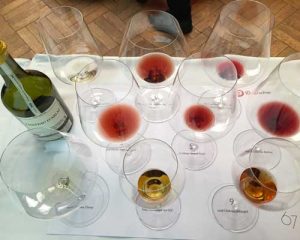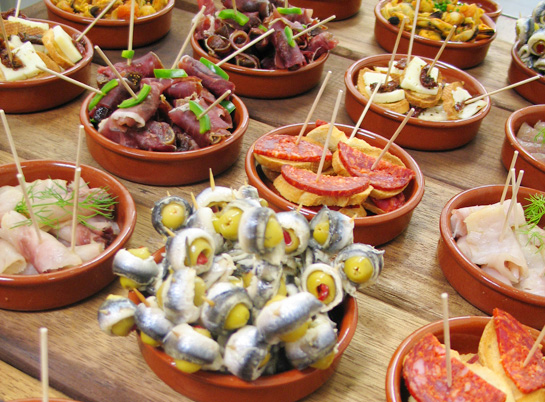 As Jancis Robinson likes to say, a good wine tells a story: it has a beginning a middle and an end. However, sometimes a wine’s story can be difficult to put into words! iDealwine are on hand to guide you through some of the less evident terms thrown about in the wine tasting world. Here are ten expressions to try out at your next tasting!
As Jancis Robinson likes to say, a good wine tells a story: it has a beginning a middle and an end. However, sometimes a wine’s story can be difficult to put into words! iDealwine are on hand to guide you through some of the less evident terms thrown about in the wine tasting world. Here are ten expressions to try out at your next tasting!
“Look at the legs on this wine!”
Fear not, your wine has not sprouted a pair of legs. This expression refers to the droplets that form inside a wine glass when you tilt or swirl the glass. Contrary to popular belief, legs have nothing to do with the quality of a wine but rather they inform you about the level of alcohol or sugar present.
“Good acidity”
We’re sure that you’ve tasted a wine and the first thing that comes to mind is ‘crisp’, ‘bright, ‘tart’ or ‘fresh’. These are all terms that correspond to acidity. Drinking a glass of lemonade or biting into a lemon will most likely remind you of the refreshing pucker you can experience when tasting some wines. Acidity has a vital role to play in the overall balance of a wine: too much acidity makes the wine sour while a wine with no acidity will taste dull (you might also hear it branded as ‘flat’ or ‘flabby’).
“I’m getting some pyrazine”
Ever stuck your nose in a glass and thought ‘green’? You were probably smelling methoxypyrazine (or ‘pyrazine’), an aromatic compound found in, amongst other things, bell peppers and some wine. Bordeaux grape varieties often display this intriguing aroma (Sauvignon Blanc, Cabernet Franc, Cabernet Sauvignon, Merlot, Carménère and Malbec). Recent studies have shown that growers can alter the amount of pyrazine present in a wine by pruning the leaves on a grapevine. It’s not just bell pepper aromas that are conjured up from pyrazine, some Sauvignons Blancs from the Loire (such as Sancerre and Pouilly Fuissé) will give off notes of mint chocolate, tarragon, parsley or sweet basil while a red Bordeaux can smell of roasted red pepper, green peppercorn or mint.
“This wine is very feminine” / “This wine is very masculine”
Two of the more controversial terms in the wine tasting world that cause some oenophiles to bristle. The idea of using a gender to describe wine might seem ludicrous, but for many tasters these are adjectives that describe wine in a way that makes it easy to relate to. Whether you choose to add these terms to your own wine tasting vocabulary or not, it’s important to understand what critics mean by them. A ‘feminine’ wine is often low in alcohol and tannins but high in acidity, subtle fruit, finesse, delicacy and minerality. The Pinots Noirs of Chambolle-Musigny often carry this label (the famous Les Amoureuses climat in Burgundy is so named because of the feminine wines that this terroir produces) while the wines of Gevrey-Chambertin are ‘masculine’ wines. Masculine, or ‘muscular’ wines are full-bodied and powerful wines and their aromas are easier to sniff out.
“This wine is closed”
You may have heard a wine being referred to as ‘closed’, or even ‘austere’ or ‘tight’, meaning the wine needs more time to age and express itself fully in terms of aromas and flavour profile. Crucially, the difference between a closed wine and a one-dimensional wine is that a closed wine will open up either with time or exposure to air i.e. by cellaring or decanting.
“This wine is tannic”
Tannins are naturally occurring compounds that exist inside grape skins, seeds and stems. More commonly found in red wine due to longer contact with the grape skins during the winemaking process, tannins are responsible for the drying sensation you sometimes experience in your mouth (think of the sensation on the inside of your cheeks when drinking cold black tea). They are crucial in helping a wine to age.
“This wine is chewy”
If you want to sound like a real expert, remark not only on the presence of tannins in a wine, but also on the style of these tannins. ‘Chewy’ is just one adjective of many to describe the different types of tannins and it describes a wine with a heavy, fleshy texture. It’s a similar sensation to eating a berry jam, where you feel like you need to chew before you can swallow.
“Great balance”
Possibly the most important attribute a wine can have and therefore an important term to understand! If a wine is balanced it means that no single element dominates the nose or the palate. Acidity, tannins, sweetness, fruit and alcohol come together in complete harmony. The calling card of a truly excellent wine!
“Superb length”
Length is used to describe how long the taste of a wine lingers on the palate after swallowing or spitting. You’ll often hear real wine buffs talk about ‘Caudalies’ too. Stemming from the Latin word ‘Caude’, meaning ‘tail’, a Caudalie is the unit of measurement used to determine how long a wine’s flavour persists. One Caudalie is equivalent to one second. As you can imagine, the longer the better and exceptional wines can go up to 20 Caudalies!
“An excellent finish”
It’s easy to confuse a wine’s length with its finish and it’s not uncommon to hear these terms used interchangeably. However, the finish is more descriptive and refers to the sensation and flavours that are left in your mouth once you have swallowed the wine. You can have, for example, a mineral finish, a spicy finish or a bitter finish.
So, there you have it. Ten useful expressions that will carry you through from start to finish of your wine’s story. Bonne dégustation!



